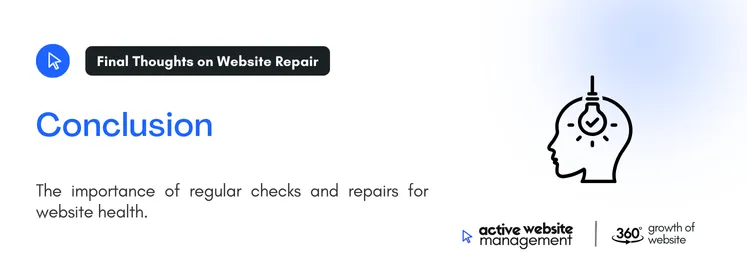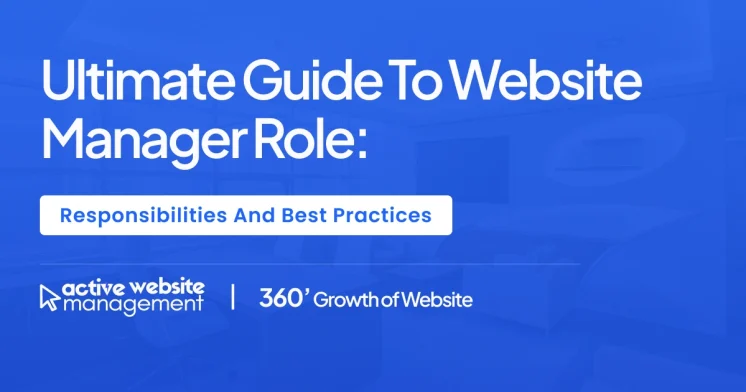
In the digital era, a fully functional website is crucial for any business or personal project. But what happens when your website begins to malfunction or performance declines? Whether it’s broken links, slow loading times, or layout issues, understanding how to handle website repairs is essential to maintaining your online presence.
This comprehensive guide to website repair covers everything you need to know, including common issues, practical fixes, and preventative maintenance tips. We’ll also explore how Active Website Management (AWM) services can help you address website repairs proactively, ensuring your site stays healthy and efficient.
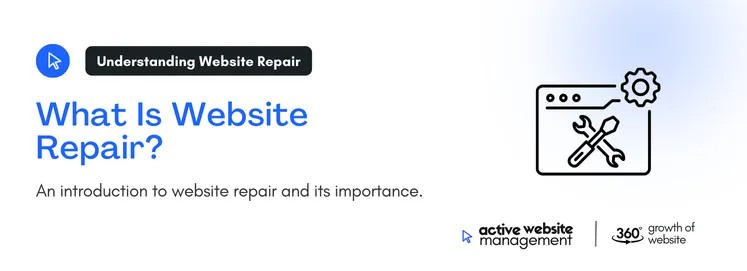
Website repair refers to the process of identifying and fixing issues that affect a site’s performance, user experience, or functionality. These issues can range from minor glitches, such as broken links or missing images, to larger problems like a website crash or poor site performance.
The most common website repair tasks include:
In this article, we’ll discuss these issues in detail and guide you through how to repair them.
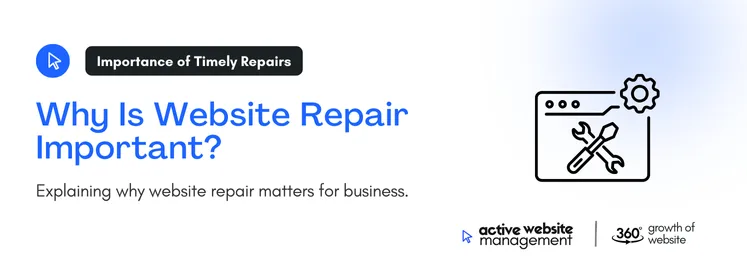
Keeping a website functional is essential for several reasons:
Visitors expect websites to be fast, responsive, and error-free. A broken or slow website can frustrate users, leading to high bounce rates and lower engagement.
Don't Wait for Growth—Accelerate It with Active Website Management
Search engines like Google reward websites that are well-maintained and penalize those with slow load times, broken links, or poor mobile responsiveness. Ignoring website repair can harm your SEO rankings.
Websites that are not regularly repaired and updated can become vulnerable to cyberattacks. Malware, hackers, and other security threats exploit outdated software, plugins, or themes, making website repair essential for safety.
If a site crashes during a sale or important visitor interaction, businesses can lose significant revenue. A well-maintained and repaired website keeps the conversion funnel smooth, ensuring users complete their actions.
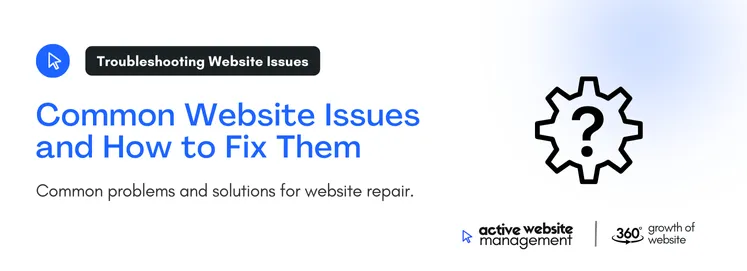
Let’s dive into the most common website issues and how to repair them effectively.
Problem:
Broken links lead users to a 404 error page, negatively affecting both user experience and SEO. Search engines view broken links as a sign of poor maintenance, which can lead to lower rankings.
Solution:
Problem:
Slow websites frustrate users and hurt SEO. Page speed is a ranking factor, and even a few seconds of delay can result in a significant drop in user engagement and search engine rankings.
Solution:
Problem:
If your website’s database becomes corrupted, it can lead to site crashes, loss of content, or the inability to access certain parts of the site. This is a common issue in content management systems (CMS) like WordPress.
Solution:
Problem:
Plugins and themes can occasionally conflict with one another, causing site errors, slowdowns, or full-blown crashes.
Solution:
Problem:
A website that isn’t secure can fall victim to hackers, data breaches, or malware attacks. Common vulnerabilities arise from outdated software, weak passwords, or poor security configurations.
Solution:
Don't Wait for Growth—Accelerate It with Active Website Management
For businesses and individuals who don’t have the time or technical expertise to handle website repair, Active Website Management (AWM) offers a complete solution. Here’s how AWM can help you keep your website running smoothly:
AWM services constantly monitor your website’s performance, security, and functionality. This proactive approach ensures that issues are identified and repaired before they escalate.
AWM ensures that your website is always up to date with the latest security patches, reducing the risk of cyberattacks or malware infections.
AWM performs regular backups of your website, so if something does go wrong, your data can be quickly restored without significant downtime.
From compressing images to minifying files, AWM services handle all aspects of performance optimization to keep your site fast and user-friendly.
AWM manages and updates your website’s plugins and themes to ensure compatibility and prevent conflicts that could break your site.
While website repairs are sometimes unavoidable, there are steps you can take to prevent many common issues. Implementing a routine maintenance schedule is the best way to keep your website healthy and avoid costly repairs down the line.
Update your CMS, plugins, and themes regularly to reduce security vulnerabilities and prevent compatibility issues.
Backups are your safety net. Set up automatic daily or weekly backups to ensure minimal downtime in case of an issue.
Use tools like Google PageSpeed Insights to monitor and improve your website’s performance. Reducing load times and optimizing images will enhance both user experience and SEO.
Run regular checks for broken links and fix them to maintain a professional appearance and avoid SEO penalties.
Install a security plugin and monitor it regularly for any threats. Respond promptly to any warnings to keep your site safe from attacks.
Website repair is a critical aspect of maintaining a successful and functional online presence. Whether you’re dealing with slow speeds, security vulnerabilities, broken links, or database corruption, understanding how to fix these issues ensures a smooth user experience and better search engine rankings.
If you find it overwhelming to keep your site in perfect condition, Active Website Management (AWM) offers a professional solution to all your website repair needs. By proactively monitoring your site and addressing problems before they arise, AWM helps you avoid costly repairs and maintain an efficient, secure, and high-performing website.
For long-term success, adopt a proactive approach to website repair and maintenance. By implementing preventative measures, you can focus on growing your business while your website remains a powerful tool for reaching your audience.

Be quick! Spots are almost gone for September. - Starts at ₹6666/month
Get started with AWM today and watch your website grow.
Our expert team is ready to help.
We respect your privacy. Unsubscribe anytime.
We respect your privacy. Unsubscribe anytime.


